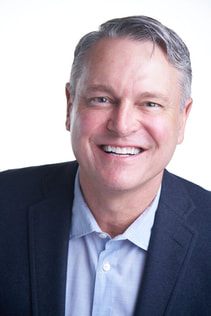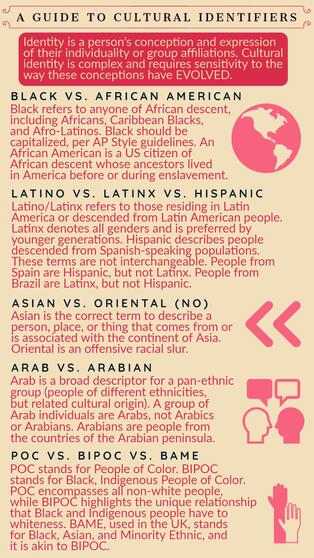|
Note: I originally wrote this piece on IABCLA’s Freelancer Roundtable webinar for the chapter’s blog. I serve as the group’s vice president/president-elect.
“As an independent consultant, you need to think like an entrepreneur — you are your own business,” he said. “Focus on your expertise and maximize your talents. Also, identify your target market.” 1A. “Are you an indoor cat or an outdoor cat?” Jake recalled an IABCLA event he attended where Victoria Dew, founder and CEO of Dewpoint Communications and the immediate past chair of the IABC International Executive Board of Trustees, posed this question to the group. She defined “indoor cats” as those who crave stability, like to receive daily meals, and look at the world from the comfort of their safe place. Someone who has a full-time job with an employer might fall in this group. Conversely, “outdoor cats” tend to be more independent in that they’re not sure where their next bite is going to come from, they live on the go, and each day is a new challenge. This feline is more along the lines of an independent consultant. We all have different motivations, including income, health, relationships, environment, and the desire to work at home. Jake’s advice: before one becomes an independent consultant, they should first consider what type of “cat” they are. B. Advantages / Disadvantages: Pros: - Flexibility: Jake’s primary motivation for transitioning to full-time freelancer was the desire for a more fluid schedule, one that allowed him to head up assignments at the times that were best for him. Venturing out on his own also permitted him to work from home, so he no longer had to contend with long commute times. - Choice: the aspect Jake liked most about being independent was the opportunity to work on projects that were most of interest to him. In the past, he took on a host of sales projects — trade shows, email campaigns, lead generation — but his real passion was dealing with that which supported branding and communication, such as public relations and content development. Cons: - Isolation: there are times when Jake found he lacked the human contact that comes from being in the workplace. However, he makes a point to counter isolation by scheduling a networking lunch or coffee with a colleague at least once a week, as this allows him to build his network and leave his home office. - Earnings: another challenge of freelancing is income instability and the fact that there’s little way of knowing the amount of income ones stands to generate year-to-year. This, of course, has tax implications and that’s why Jake offers this tip: one should place half of their professional income in a business account and use these funds to pay taxes. This money can also be used for IRA investments each year. 2) Getting started A. Differentiation: Jake suggested new freelancers narrow in on their talents, as well as the type of projects they’d like to handle. Having headed up marketing departments at various software companies, Jake had a variety of expertise to draw on — lead generation, trade shows, PR, content creation, social media — and he let perspective clients know he could perform all of these tasks. However, this worked to his disadvantage as would-be customers were often searching for certain expertise. It wasn’t until he focused on the IoT (“Internet of Things”) that his business took off – in fact, people began to seek him out once he established himself as an expert in this technology area. B. Networking: Jake noted 75 percent of his work as an independent consultant has come from just five individuals, and he referred to this as his “Power 5.” He’s found when others make referrals it takes the pressure off of him having to be his own salesman. Folks need to let others know what kind of work they’re looking to do and that they’re available for hire, he suggested. C. Clients: there are several employment agencies that specialize in hiring independent consultants, including M-Squared Consulting, Patina Solutions, Business Talent Group, and Resources Global Professionals. There are also many online platforms that list a variety of jobs, like Upwork, Catlalant, TalMix, Expert360, and Toptal. In fact, Jake has a client who will only hire him through Upwork, as they find it makes for a more convenient arrangement. D. LinkedIn: people can increase their visibility on their LinkedIn profile by 40 times if they complete three tasks: populate the top section entirely (name, photo, headline), list at least two job experiences, and add five recommendations. If these three components are in place, it triggers an algorithm and provides higher search visibility. Also, people should indicate on their profile they’re an independent consultant and list their professional strengths. E. LLC: Jake set up a limited liability company (LLC) to ensure he was protected should he encounter legal issues in the course of his work. Also, being a LLC adds a level of legitimacy. He found arranging an LLC through the State of California to be seamless and quick, as he went through Legal Zoom. The annual fee is $800, and the designation must be renewed every year. F. Taxes: Jake advises freelancers in California to be paid as an independent contractor on a 1099 tax basis, rather than on a W-2 as one would if they were a company employee. The AB-5 or “gig worker bill” was recently signed into law, and it reclassified many independent contractors as employees. As an independent contractor, one must pay their own state, federal and business taxes. A positive to this 1099 arrangement is certain tax deductions can be made, including Internet, cell phone, laptop, and business software. In addition, they are eligible for the following retirement plans: 25 percent of income can be put in a SEP-IRA or a 401-K can be maxed out. G. Rate: Jake recommended independent communicators price themselves accordingly and quote their rate with confidence. There is a need to get out of the mindset of how much one made per hour when they were a direct hire with an organization, as their employer was paying for their healthcare, 401K, disability insurance, and other such expenses. It should be explained to a client they’re saving money given they don’t have to pay such costs. Also, there are times when a higher rate is a purchase of not only one’s talent, but experience — a client may find someone with less knowledge or skill with a lower rate, but it may take them twice as long to complete a project. He used the following formula to figure out compensation: - Divide annual income goal by 2,000 (roughly the # of working hours/year) - Multiply that by 2, 2.5, and 3 - That is your low to high range of billing rates - e.g. $150K = $150, $187.50 and $225 per hou 3) Resources Jake recommended the following services: A. Business tax registration certificate & annual business tax for City of Los Angeles www.finance.lacity.org B. 99Designs – logo package from $299 - $899 www.99designs.com C. Jenny LaNicca – logo, website, letterhead www.jennylanicca.com / [email protected] D. Jared Gold, Website by Tonight - $899 - $1299 flat rate www.websitebytonight.com / [email protected] E. Agencies: M-Squared Consulting, Patina Solutions, Business Talent Group, Resources Global Professionals F. Online Platforms: Upwork, Catalant, TalMix, Expert360, Toptal G. PICA – Professional Independent Consultants of America www.picanetwork.org All Access Annual Pass is $395 Virtual sessions on topics such as “Getting Started as an Independent Consultant” and “Branding to Build Your Business” Explore PICA’s online knowledge library for tips on marketing, business development, legal and contracting, etc. Some articles and templates are only for members, but many are open to the public. Thank you again, Jake, for sharing your expertise and facilitating an outstanding discussion!
And thank you to those who are reading this for supporting IABCLA! The chapter is committed to helping communications professionals stay connected and build their careers during these challenging times. Please stay up-to-date on events and activities by visiting IABCLA.com, subscribing to the chapter’s newsletter, and by following the group on LinkedIn.
0 Comments
Jeff Willinger, a globally recognized expert on the digital and future workplace, will lead the conversation. He’ll discuss such topics as leading digital squads, working productively, boosting skills, managing stress, and strengthening bonds.
Click here to register! (Note: I’m IABCLA's vice president/president-elect, and I often post updates on chapter happenings.) My fellow IABCLA board member Farida Habeeb wrote an excellent piece on diversity, equity, and inclusion (DE&I) for the chapter’s blog, and I wanted to reprint it on my website. I’m the group's vice president/president-elect, and I often post chapter related content. But it’s a courage that, somehow, we expect our Black colleagues to muster every day in the face of still-rampant racism in the workplace and at home. Black people don’t have the luxury of turning away. They experience this outrage on a daily basis. And the world — including the corporate world — is finally waking up to the lived reality of hundreds of years of systemic oppression, from enslavement to Jim Crow to the school-to-prison pipeline.
What we do now, in a historical moment already fractured by a global pandemic, will determine what kind of future we’ll have. It will determine whether the arc of human history really does bend towards justice. And while there’s no one-size-fits-all solution to ending systemic racism in the corporate workplace, there are steps we can take to shift the playing field as communications professionals, particularly internally. Since internal comms has direct contact with HR, we can make our presence felt. And we can push for meaningful change in our hiring practices, now. But before we do that, it’s important to tackle some myths about how we address the racist elephant in the corporate boardroom. Myth #1 – We Can Train Our Way out of Racism A lot has been said about the importance of diversity and inclusion trainings in the workplace, especially around unconscious bias. “Unlearning” our automatic, unintentional, and deeply ingrained biases is supposed to break the corporate cycle of C-Suite executives who are mostly male and entirely white (except for the CDO, who already bears the emotional burden of educating their non-Black colleagues on how to be anti-racist). As an educator whose expertise is in DE&I, I’m going to go ahead and call bullshit. Not just because education can’t be the only answer to dismantling racist systems of power, but because the facts don’t lie: in 2018, Black professionals held 3.3% of all executive or senior leadership roles. Among Fortune 100 companies, 3% of CEOs are Black. Among Fortune 500 companies, less than 1% of CEOs are Black. Let that sink in. Black folx don’t even comprise a single percentage point of the CEOs who have the most power, the most privilege, and the most influence on our consumer habits. And a two-day training on implicit bias is supposed to somehow undo this? Nah. Trainings are only a very small part of the solution. And more often than not, they are mere legal cover for not taking any concrete steps to hire and promote diverse talent. Myth #2 – It’s a Pipeline Problem! This lie is so often repeated that it’s nauseating, especially in tech circles. It goes something like this: “There aren’t enough candidates who are Black. I mean, you need access to education at the top universities in order to get hired at the top tech firms, and they just don’t have that. We can’t do anything about it because it’s an access problem.” The problem with this line of reasoning (and the larger metaphor of the pipeline, itself a problematic term borrowed from the white, male-dominated field of engineering) is that it enables companies to redirect and avoid responsibility for hiring diverse talent. It also makes major assumptions about where the best talent lies (“top universities”), and it presumes that anyone’s journey to professional development can be funneled smoothly through a linear pipeline of hard work and determination. Except for the wealthy and well-connected, this linear pipeline simply isn’t realistic. Pretending otherwise just kicks the can down the road, and it will no longer do. Exceptional Black talent is everywhere; it’s just about knowing where to look. (Hint: HBCUs are a great place to start.) Myth #3 – Metrics are Colorblind When discussing why they chose to interview or hire certain candidates, hiring managers will point to work experience, hard skills, and education as the metrics by which they assess job seekers. These allegedly “colorblind” metrics are supposed to determine how effective a job candidate will be in their new role (after all, only the current US president could get away with achieving the highest office in the land without the requisite experience!). In other words: qualifications become the measure of job performance, and they don’t “see” race. Except that they totally do. In a study conducted by two professors at the University of Chicago School of Business, fictitious resumes with the exact same work experience, hard skills, and education were sent out with black- and white-sounding names. White names received 50% more callbacks for interviews. Callbacks were also “more responsive” to resume quality for white names than for black names. Metrics can be racist, because people can be racist. It’s on people—particularly People teams—to change their habits. And that’s precisely where internal comms comes in. Advocating for Change More than ever, internal comms and HR are finding that they share the same goal: strong organizational culture. According to Andrew Harvey, Director of Internal Communications at the VMA Group, “The line between internal communications and human resources… is becoming increasingly blurred. Both functions are engaging with the same audience, so it makes sense that the two departments work together. And with both departments constantly seeking a stronger voice in the boardroom, collaboration could be a real game-changer.” Though internal comms doesn’t usually help manage recruitment and hiring, this area is ripe for collaboration with HR. The employees we communicate with won’t change unless we encourage HR to change their approach to hiring. If culture is the end-goal of internal comms, then HR needs to rely on its IC team to support the recruiting function and attract diverse talent. And while many companies are in a hiring freeze due to COVID, the foundational work needs to start now. This will require stepping outside our comfort zones. But not without sound business sense behind it. Tools for Change In calling on internal comms professionals to push HR for meaningful change, I take inspiration from Stanford Professor of Organizational Behavior, Shelley Correll. Dr. Correll’s work on reducing gender bias in the corporate workplace is predicated on a “small wins” model of change. This model works with managers to implement small but concrete actions that produce results and serve as the building blocks to larger organizational transformation, such as measurable increases in the rate of hiring women. By taking a small wins approach, we change the playing field steadily, working alongside established hiring processes to move the needle on representation. And as change management representatives, we can all get on board with that! Step #1: Describe Positions Broadly in Job Ads Hiring managers seem to love creating a laundry list of requirements for a job, inadvertently creating a narrow search for a unicorn candidate that, well, simply doesn’t exist. As storytellers and concise communicators, IC can collaborate with HR to craft job descriptions with a broader net. Job ads that focus, in particular, on skills and competencies (rather than focusing on “experience”) will encourage a diverse set of candidates to apply. And the more diverse your candidates, the more your company will avoid group-think, which stifles innovation. Step #2: Discuss and Align on Criteria Before Evaluating Applicants When crafting criteria for a job description, be sure to decide what the position requires, so that the goal-posts aren’t unintentionally shifted during the applicant screening process. Is education the most important criterion? Or is it competency in a particular system, platform, or software? It’s especially important to re-examine criteria from the lens of potential bias: is the job ad placing too much emphasis on nebulous characteristics such as “personality”? (Black women, for example, are often incorrectly perceived as aggressive and angry, leading to negative evaluations of personality.) Always question criteria that don’t directly correlate with performance. Step #3: Screen Applicants with a Rubric We all know that the volume of applications for a role is sometimes relentless, and that every HR department is under pressure to hire efficiently. But slowing down by using your internal comms team to create a rubric for evaluation actually results in much more consistently diverse—and productive!—hiring. Standardization leads to fairer outcomes. As always, use the criteria laid out in the job ad to create your rubric, and avoid “gut instincts” when reviewing applicants. Instincts can be laden with bias, causing your applicant pool to shrink, once again, to solely white and male. Step #4: Develop a Consistent Interview Process across Candidates Interview to criteria and ensure that all team members are prepared to ask questions that engage with an applicant’s skill set. Too many interview processes are haphazard, with some team members aggressively questioning candidates of color or interrupting female candidates before they can finish their answers. Consider appointing a facilitator during panel interviews, whose job is to maintain interview standards across candidates, regardless of their race or gender. The more interviews are structured, the less likely they are to be unintentionally biased. Step #5: Be Alert to Bias in Endorsements Employee referrals are incredibly powerful in the hiring process—in fact, companies are 4x more likely to hire a candidate who was internally referred. Referrals can be so powerful that they serve as the “tie-breaker” between equally qualified candidates. But referrals are just as prone to bias as any other mechanism, and we need to be wary of them exerting undue influence in our decision-making. Our social networks often reflect our own backgrounds: our race, socioeconomic status, college alumni affiliation, and more. If a company relies too heavily on employee referrals, they run the risk of hiring the same people, leading to homogeneity instead of diversity. I get that corporations these days are risk-averse, and that part of what makes hiring such a tricky proposition is that we have a tendency to seek “replicable” results. But it’s time we start taking more risks as communications professionals who have direct contact with the departments that manage our external (PR) and internal brands (HR). We need to speak up and have the courage to challenge the everyday racism in our organizational structures. Solidarity statements and crisis communications plans carry little weight when our organizations remain overwhelmingly white and male, with little to no representation by BIPOC leadership. It’s time to do the internal work.
The chapter is now working on diversity and inclusion programming. I will, of course, share details as soon as it becomes available.
(Note: I’m IABCLA's vice president/president-elect, and I often post chapter related content.) |
AuthorI'm Eli Natinsky and I'm a communication specialist. This blog explores my work and professional interests. I also delve into other topics, including media, marketing, pop culture, and technology. Archives
July 2024
Categories |




 RSS Feed
RSS Feed